Sodium Lauryl Ether Sulfate (SLES) 70% is a common surfactant used in many household and industrial products. It’s typically used in concentrations around 70% in its raw form before being diluted for specific applications. Here are the key uses and benefits of SLES 70%:
Uses of SLES 70%:
-
Personal Care Products:
-
Shampoos: SLES is commonly used in shampoos due to its excellent foaming properties. It helps in cleaning hair by breaking down oils and removing dirt.
-
Body Washes and Soaps: Its foaming and cleansing properties make it ideal for body washes and liquid soaps.
-
Facial Cleansers: Some facial cleansers also use SLES due to its ability to remove oils and impurities.
-
Toothpaste: SLES helps create foam in toothpaste, which is essential for spreading and cleaning.
-
-
Household Cleaning Products:
-
Dishwashing Liquids: Its ability to dissolve grease makes it a common ingredient in dishwashing detergents.
-
Surface Cleaners: SLES is often found in all-purpose cleaners due to its grease-cutting and foaming abilities.
-
Laundry Detergents: It may be used to improve the cleaning action in laundry detergents.
-
-
Industrial Applications:
-
Textile Industry: SLES is used in the textile industry for washing, dyeing, and finishing fabrics.
-
Oil Recovery: It is used in the oil industry for oil recovery processes due to its surface-active properties.
-
Emulsifiers: In the formulation of emulsions and dispersions, especially in the production of paints, coatings, and inks.
-
-
Agriculture:
-
Pesticides and Herbicides: SLES can be used as an emulsifier in the formulation of certain pesticide and herbicide products.
-
Benefits of SLES 70%:
-
Effective Cleansing and Foaming:
-
SLES is known for its excellent ability to create foam, which helps in better cleaning of skin, hair, and surfaces. It removes oils, dirt, and grime efficiently.
-
-
Cost-Effective:
-
Being a highly concentrated version, SLES 70% is cost-effective when diluted for manufacturing personal care or household products.
-
-
Good Surface Active Agent:
-
It reduces surface tension, allowing it to work effectively in products that require the lifting or removal of dirt and oils.
-
-
Versatility:
-
SLES can be used in a wide range of formulations, from personal care to industrial cleaning agents, making it a versatile ingredient.
-
-
Biodegradable:
-
Compared to many other surfactants, SLES is considered biodegradable, which makes it a more environmentally friendly option.
-
-
Mild on Skin (When Diluted Properly):
-
When properly diluted, SLES can be gentle on the skin, making it suitable for use in personal care products like shampoos and body washes. However, concentrated forms can be irritating, so formulations must ensure proper dilution.
-
-
Dispersing Agent:
-
SLES 70% can act as a dispersing agent in paints, coatings, and industrial applications, improving the performance and stability of products.
-
Precautions:
-
Skin Irritation: SLES can cause skin irritation in high concentrations, so formulations need to ensure appropriate dilution and balance with other ingredients to maintain skin safety.
-
Environmental Concerns: While biodegradable, the surfactant can still contribute to water pollution if not properly treated before disposal.
In summary, SLES 70% is a powerful and versatile ingredient with a variety of uses across personal care, cleaning, industrial, and agricultural products, making it an important component in many formulations.
Here’s the updated information with the usage range included for SLES 70%:
Uses of SLES 70%:
-
Personal Care Products:
-
Shampoos: Used for foaming and cleaning hair.
-
Usage Range: 1-30% in finished product formulations.
-
-
Body Washes & Soaps: Helps in foaming and removing dirt from the skin.
-
Usage Range: 5-20% in the final product.
-
-
♀️ Facial Cleansers: Removes oils and impurities from the face.
-
Usage Range: 2-10% depending on skin sensitivity.
-
-
Toothpaste: Adds foaming action in toothpaste.
-
Usage Range: 1-2% in toothpaste formulations.
-
-
-
Household Cleaning Products:
-
️ Dishwashing Liquids: Cuts through grease for better cleaning.
-
Usage Range: 10-20% in dishwashing liquid.
-
-
Surface Cleaners: Used in all-purpose cleaners to remove grime.
-
Usage Range: 5-15% depending on the type of cleaner.
-
-
Laundry Detergents: Improves cleaning power in laundry formulations.
-
Usage Range: 1-10% in laundry detergents.
-
-
-
Industrial Applications:
-
Textile Industry: Used for washing, dyeing, and finishing fabrics.
-
Usage Range: 5-10% in industrial textile processing.
-
-
️ Oil Recovery: Helps in oil extraction processes.
-
Usage Range: 2-5% in oil recovery solutions.
-
-
Emulsifiers: Used in paints, coatings, and inks for stability.
-
Usage Range: 1-5% in emulsions and coatings.
-
-
-
Agriculture:
-
Pesticides & Herbicides: Acts as an emulsifier in some agricultural products.
-
Usage Range: 1-5% depending on formulation.
-
-
Benefits of SLES 70%:
-
Effective Cleansing & Foaming:
-
Produces foam to remove dirt, oils, and grime from skin, hair, and surfaces.
-
-
Cost-Effective:
-
Economical due to high concentration (70%), making it cost-effective for manufacturers.
-
-
Good Surface Active Agent:
-
Reduces surface tension to help lift dirt and oils efficiently.
-
-
Versatility:
-
Can be used in various products, from personal care to industrial applications.
-
-
Biodegradable:
-
Environmentally friendly as it is biodegradable.
-
-
Mild on Skin (When Diluted Properly):
-
Gentle when diluted properly, suitable for personal care products like shampoos and body washes.
-
-
Dispersing Agent:
-
Acts as an emulsifier, improving stability in paints, coatings, and other industrial products.
-
Precautions:
-
⚠️ Skin Irritation: High concentrations can cause skin irritation, so it must be diluted properly in formulations.
-
Environmental Concerns: Can contribute to water pollution if not properly treated.
This range provides a good idea of how much SLES 70% can be used in different formulations!
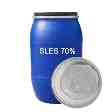
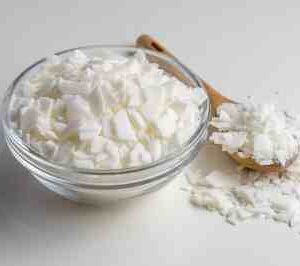
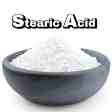
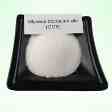
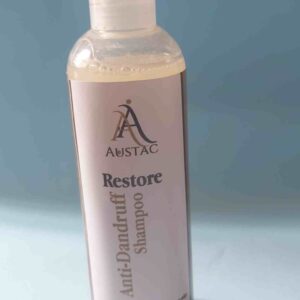
Reviews
There are no reviews yet.